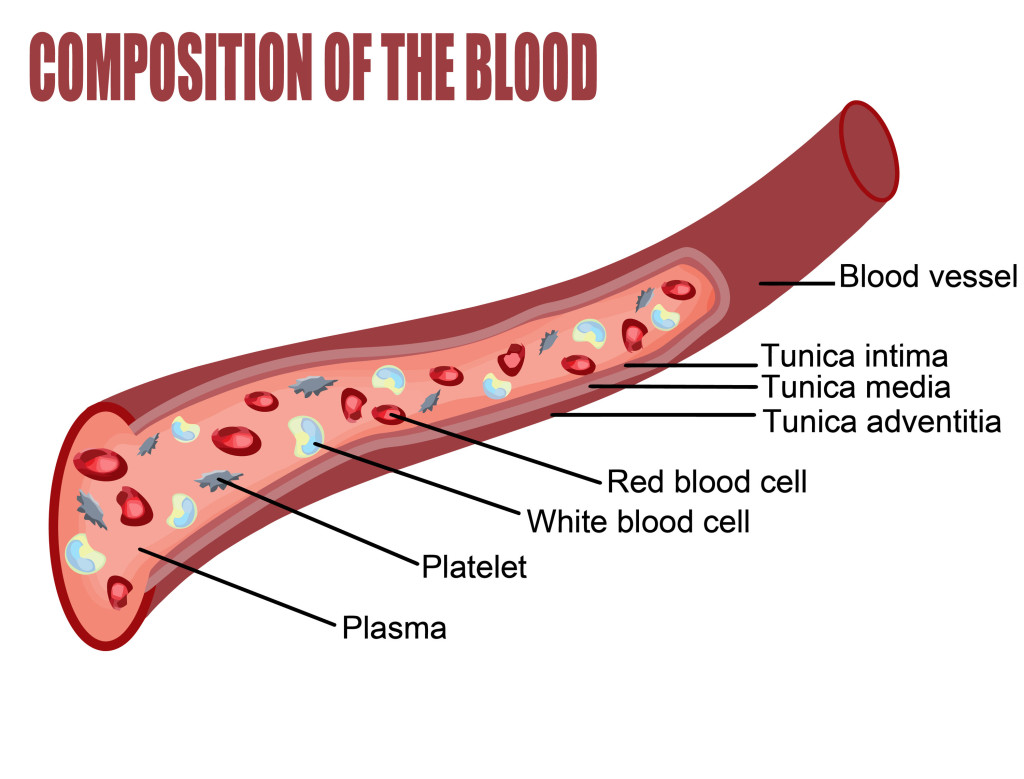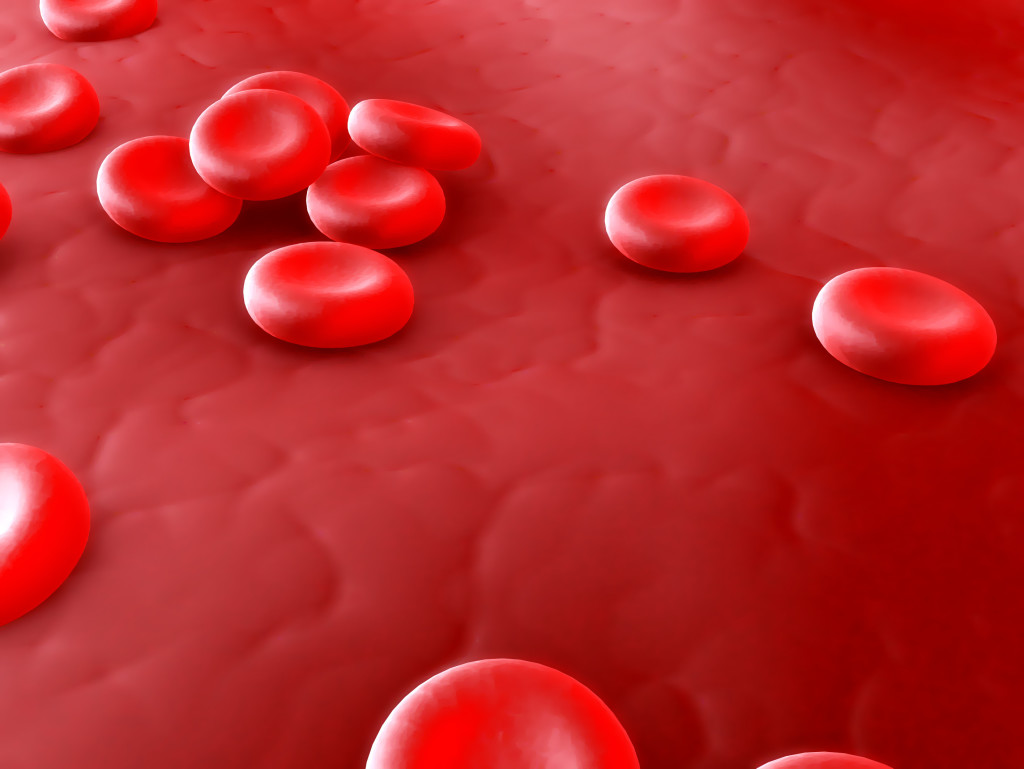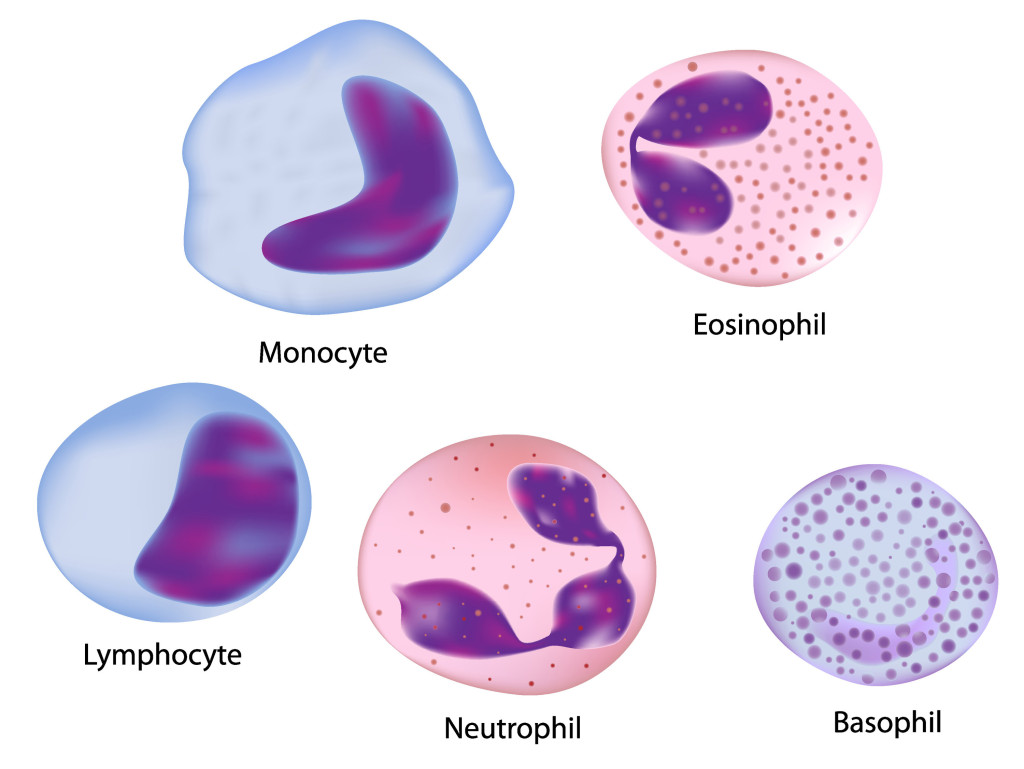What is Hematology?
- Hematology is the study of the blood. Blood is a fluid that is necessary for the maintenance of life. Without it we would all be dead. We need blood to maintain good health. Blood carries nutrients and oxygen to the cells of the body and removes carbon dioxide and waste materials from the body.

- Blood travels through the body through the following:
- Arteries: delivers oxygenated blood to the organs
- Veins
- Capillaries
What are the components of blood?
The major components of blood are:

- Plasma
- Platelets
- White blood cells
- Red blood cells(RBC)
Platelets
- These are small fragments of cells.
- They developed from megakaryocytes.
- They help the blood to clot when there is an injury, by adhering to the lining of the injured blood vessel.
Plasma
Plasma is the yellowish fluid in which the blood cells are suspended. Approximately 55% of the blood is composed of plasma. Plasma is said to be about 90% water, 8% protein and 2% other solutes. Plasma functions to carry the platelets, red blood cells and white blood cells. It brings nourishment to cells and removes waste materials. The plasma carries a lot of protein that is used to regulate bleeding and clotting.
Red Blood Cells
Red blood cells, also called erythrocytes, are large cells that have no nuclei, and are known by their red color. They are the most abundant component of the blood accounting for about 40-50% of the total blood volume. They are biconcave disk with the center flattened. You can say they look more like a donut.

RBC functions to transport oxygen from the lungs to the tissue of the body and get rid of carbon dioxide. RBCs are produced in the bone marrow. They contain hemoglobin which is an iron-rich protein. Hemoglobin functions to carry oxygen from the lungs to the tissues of the body and return carbon dioxide to the lungs.
The reason why the blood is red is because of the large number of red blood cells which get the color from hemoglobin. RBC lives for about 4 months, approximately 120days. Our body continues to produce RBC each day.
White Blood Cells
White blood cells (WBC) also called leukocytes are the body’s defense cells. They protect our body from infections. They are much less than RBC but are very important in protecting the body.

There are various types of WBCs which have their own role in protecting the body. They are:
- Neutrophils
- Eosinophils
- Lymphocytes
- Monocytes
- Basophils
Neutrophils
- Most abundant WBCs (40-70%).
- They are the first to appear at an injured site.
- They are the acute inflammatory response cells.
- They ingest bacteria.
- They have a nucleus that consists of 2- 5 lobes.
- They have a life span of about 6-10hrs, thus the bone marrow produce them daily.
Eosinophils
- 1-6% of WBCs.
- They have a bilobed nucleus.
- They functions in allergic responses, and defense against parasitic worm infestation.
Lymphocytes
- Lymphocytes are the cells of immunity.
- They have a round, dense nucleus that occupies most of the cell.
- There are two types:
- T lymphocytes: they attack infected cells and tumor cells
- B lymphocytes: they produce antibodies to attack foreign cells. They have memory and originates from the bone marrow.
Basophils
- These cells make up <1% of leukocytes.
- They have pale bilobate nucleus hidden by densely basophilic granules.
- They secrete histamine and heparin.
- Histamine is a vasodilator; therefore it will increase blood flow through the dilation of blood vessels.
- Heparin is an anticoagulant thus it helps with the movement of other WBCs and in so doing prevent the blood from clotting.
Monocytes
- 2-10% of leukocytes.
- They are large cells with kidney-shaped nucleus.
- They develop into macrophages, which digests bacteria and cell debris.
In the upcoming article we will discuss the blood production in a human body.

RBC has more than just one shape; but only the “normal” RBC have the doughnut shape.
Hi, I was wondering what organelles are inside a RBC before and after maturation, this is kind of urgent as I am making a model of one and I begin construction tomorrow, Thank you.
I am an independent writer and I was looking for cover art for one of my books and your image An-artery-with-Red-Blood-Cells-and-Platelets- is wonderful. I would like your permission to use this image. All credit will be accorded to your self and not used without your express permission.
Hi Ian,
If you’d like to use the image, you can purchase it from http://www.canstockphoto.com. They are the providers of the image.